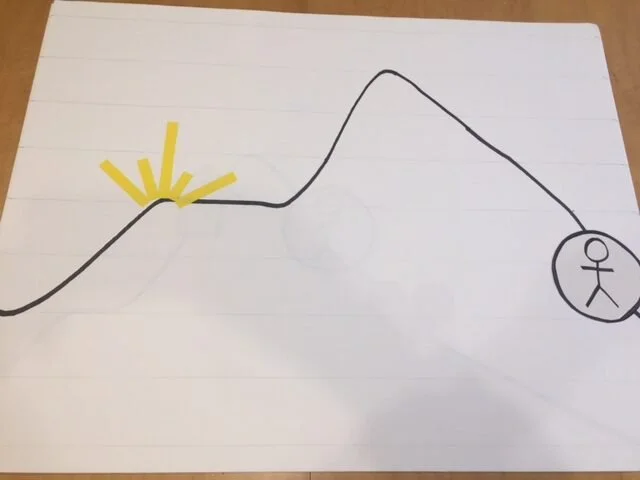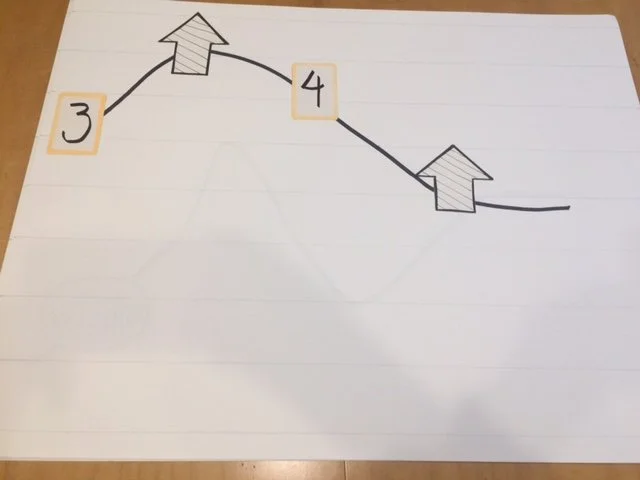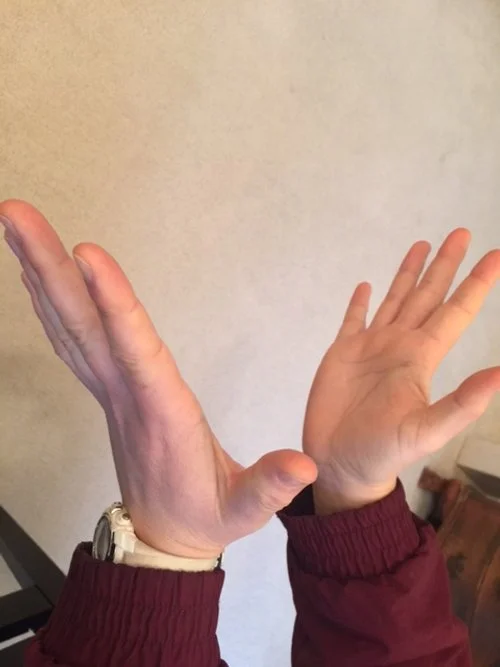Choose the Right: Simple drawing melody map
Older Primary Children
Draw these pictures on the chalkboard or whiteboard. (Hint: If you can't get into the Primary room beforehand, just draw them on poster board and bring them in. The lines don't have to be precise, but general in the direction of the ups and downs.)(For your information only, the stick figure circles stand for every time the song says you or your. The up arrows stand for every time the song says right. The numbers are for every time the song says choose or choice. The rays of yellow light stand for light. The round yellow dot stands for God. Don't tell these to the children. Let them discover.)
Ask the children:
What do you see?
What do you notice?
What do these pictures have to do with this song?
Sing the song for the children, then receive their answers. You may have to sing it again and again. You can run your finger along the black lines to give them some hints.
You might ask
"What do the numbers stand for?" then sing to help them figure out the answer.
Continue with other questions, then sing to help them figure it out.
"What do the arrows stand for?"
"What does the yellow stand for?"
Once they have figured out what the symbols stand for, ask the children to sing only the words where there is a drawing and tell them you will sing the other words. Now switch and the children DO NOT sing any of the words with a symbol, but they DO sing all the rest of the words as you sing the words with a symbol.
This is an intriguing puzzle for the children. Running your finger along the black line as you sing helps them to recognize visually the ups and downs of the melody. Figuring out what the symbols mean help the children engage and invest in figuring out the song. Hearing the song over and over again while they are engaged in trying to figure out the song helps them map the song in their head and their memory. And it is fun!
Younger Primary Children
Show the children the map. Tell them that every time they see an arrow, you would like them to hit their fist pinky side down into the palm of the other hand.
Ask a teacher to come up and be the leader of the fist to palm movements on the arrows.
Sing the song, running your finger along the line and pointing especially to the arrows where they are supposed to hit their fist to their palm.
Ask the children what word was on each of the arrows. Receive their answers.
Now ask them to splay their fingers apart with both hands in front of them like the light of a flashlight each time the yellow light rays comes in the song AND hit their palm on the arrows.
Ask the teacher to again be the leader.
Sing the song, running your finger along the black line and pointing to the arrows and the rays of light. You may want to emphasize with your voice the words that come on each of those. The children and teacher leader are doing the movements on those symbols.
Ask the children if they noticed the little stick figure person in the circle.
Ask, "What do you think that stands for?"
Sing the first line, running your finger along the black line and emphasizing when you get to the word "you." Receive their answers (You).
Figure out a movement to do on the stick figure.
Ask the children if there are three or four of them that could be a leader with the teacher that has been helping you. Have them come up to the front. Remind them they are doing a movement on the arrows, the rays of light, and the stick figure.
Sing the song, running your finger along the black line and pointing especially to the arrows, the rays of light, and the stick figures. The children up front are leading the other children in the movements.
Ask the children "What word do we sing on the arrows? What word to we sing on the rays of light? What words do we sing on the stick figures?" Receive their answers.
Ask the children to do the actions and sing those words with you this time through the song.
The children will have engaged with the song, hearing it through at least 4 times while responding with movements. It helps them visualize the song, move to the song, and anticipate what words are coming next. And it is fun!










